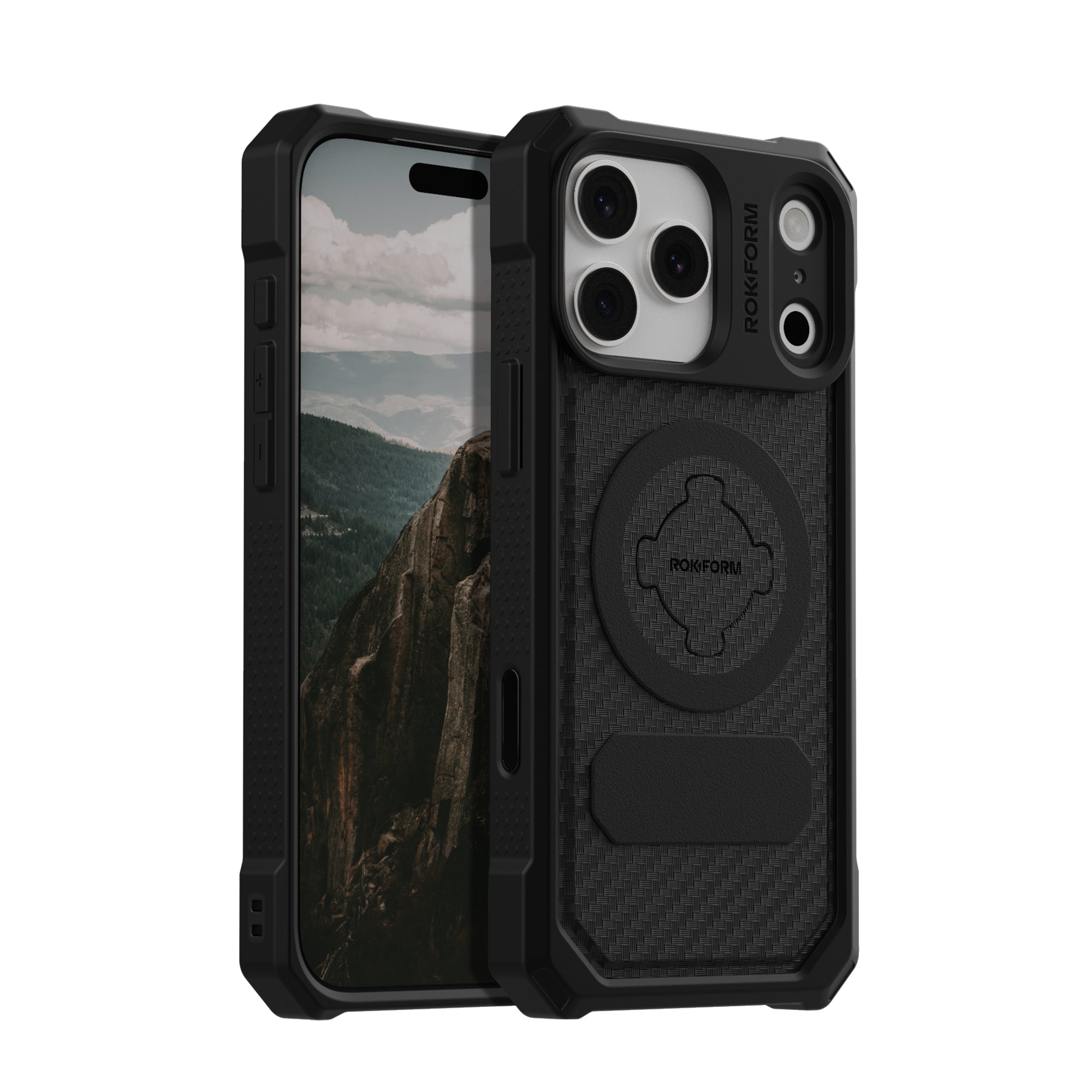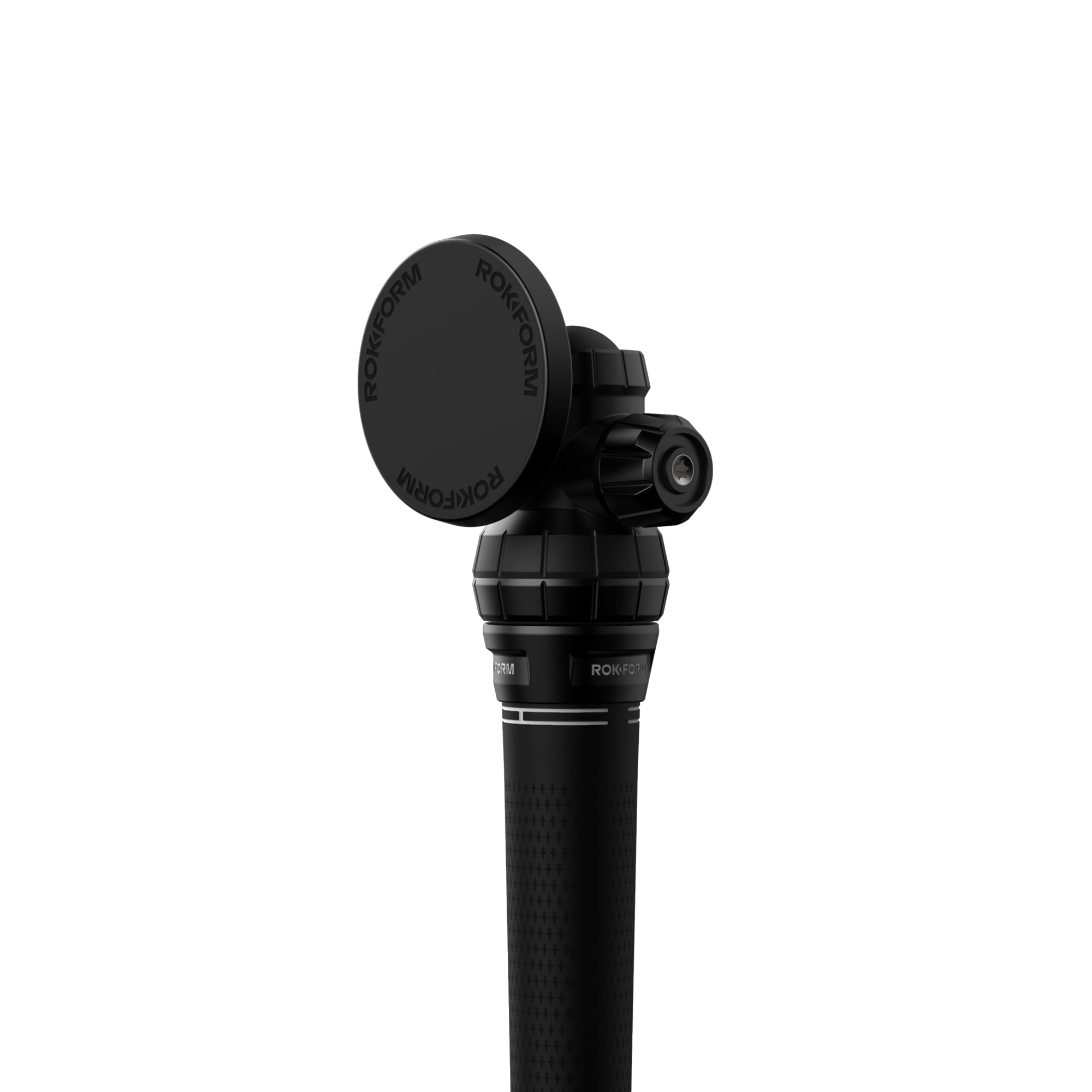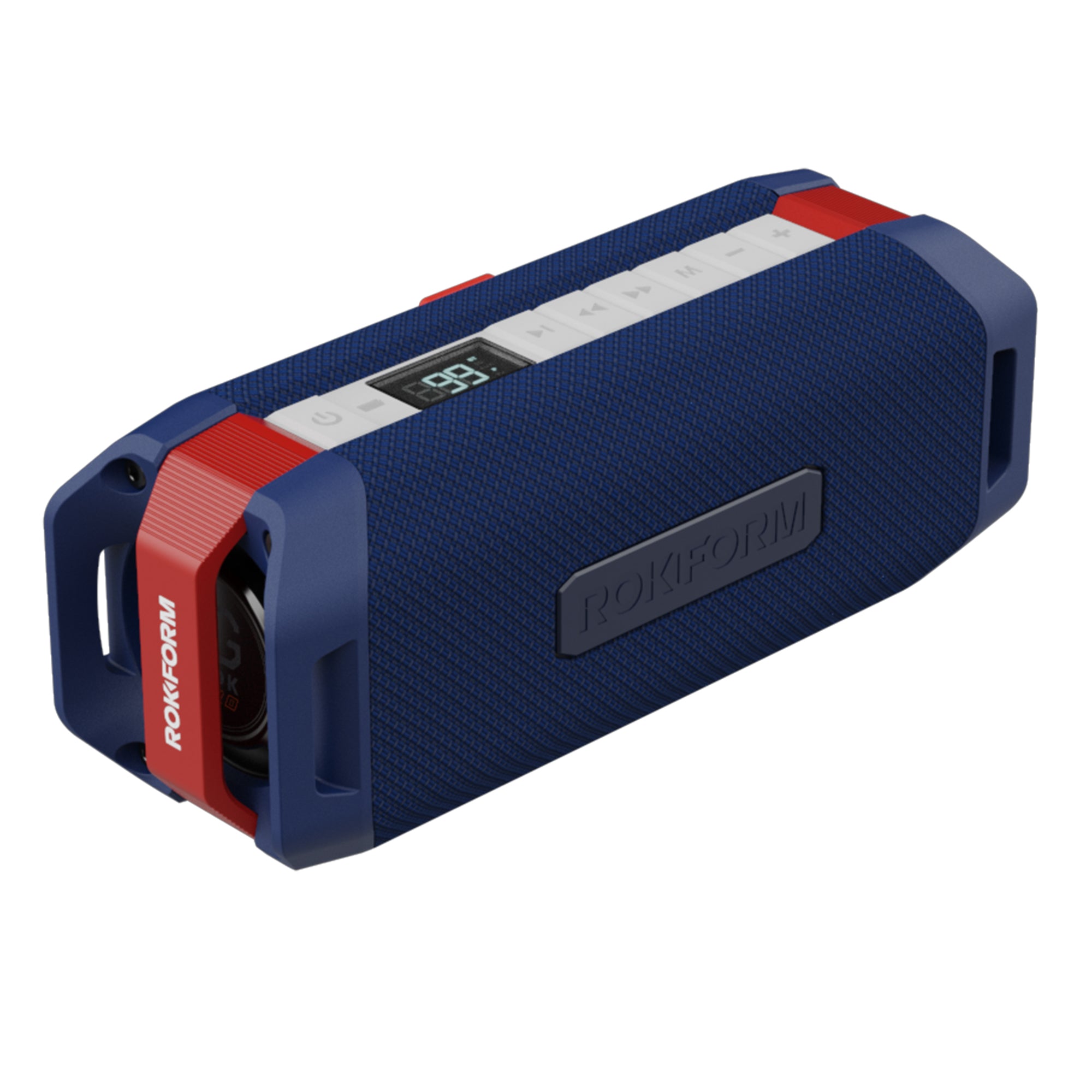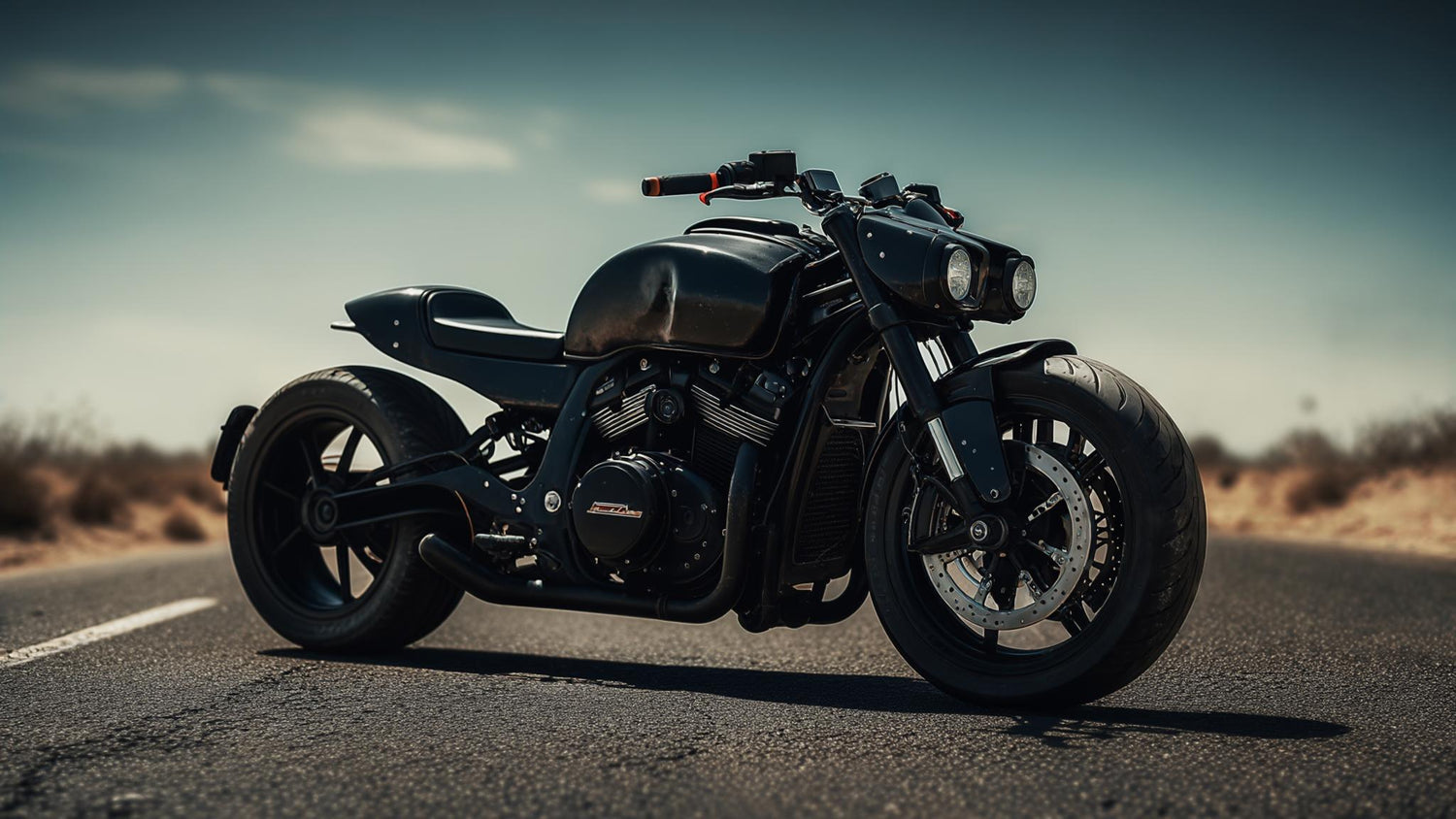Last month, my buddy Mike called me up, frustrated. "I want to get back on two wheels," he said, "but my balance isn't what it used to be." Sound familiar? That conversation happens more often than you'd think, and it's exactly why I've become obsessed with three-wheelers over the past few years.
I've spent years watching the three-wheel motorcycle market evolve from a handful of quirky options to a legitimate category that's solving real problems for riders everywhere. Whether you're dealing with balance concerns, want enhanced safety, or simply crave something different from the traditional two-wheel experience, today's 3 wheel motorcycle for adults options deliver genuine riding thrills with added stability and confidence.
This comprehensive guide explores 25 different three-wheel motorcycles across multiple categories, from budget-friendly entry models to premium touring machines and exotic performance vehicles. You'll discover essential buying considerations, detailed model comparisons, and practical insights to help you choose the perfect three-wheeler for your needs and riding style.
Table of Contents
TL;DR: Quick Takeaways
Why Three-Wheel Motorcycles Are Gaining Serious Traction
Your Essential Buying Guide: What Really Matters
Sport and Performance Trikes: Built for Thrills
Touring and Comfort Champions: Long-Distance Luxury
Budget-Friendly Options: Your Gateway to Three-Wheeling
Utility and Work-Focused Models: Function Over Form
Electric and Alternative Fuel: The Future is Here
Custom and Specialty Rides: Unique Engineering
How Each Model Stacks Up Against Your Priorities
Protecting Your Investment with Smart Accessories
Final Thoughts
TL;DR: Quick Takeaways
Here's the bottom line: three-wheel motorcycles offer way better visibility and stability than regular bikes, and motor trikes are genuinely safer because they're bigger, catch drivers' attention with their unique look, and that extra wheel makes all the difference. I've watched countless riders make the switch and immediately notice how other drivers actually see them on the road now.
Configuration matters more than you might think. The ones with two wheels up front handle corners way better - kind of like driving a really fun go-kart. The ones with two wheels in back keep that traditional motorcycle feel up front. Which trike you choose depends on whether you want familiar motorcycle dynamics or maximum stability.
Here's something that trips people up: licensing requirements are all over the map. Some states let you ride certain models with just a regular driver's license, while others want a full motorcycle endorsement. I can't stress this enough - call your DMV before you buy anything. Getting pulled over because you assumed wrong isn't fun.
Entry-level options start around $8,500 (Can-Am Ryker 600) while premium models can hit $60,000 or more (Morgan 3-Wheeler). Electric three-wheelers are finally getting good with 100+ mile ranges and instant torque that'll surprise you.
Touring models are all about comfort - heated seats, GPS navigation, and storage that actually holds useful stuff. Sport models focus on performance with advanced suspension and braking that lets you push harder than you would on a regular bike. Conversion kits let you transform your existing motorcycle into a trike while keeping its character - perfect if you're emotionally attached to your current ride.
Why Three-Wheel Motorcycles Are Gaining Serious Traction
Here's a statistic that really got my attention: traditional two-wheeled motorcycles accounted for 91% of all motorcycles involved in fatal crashes in 2017, according to Myers Legal. That reminded me of my neighbor who switched to a Can-Am Spyder after a close call on his Harley. The difference in how other drivers react to his three-wheeler was immediately noticeable - people actually see him now.
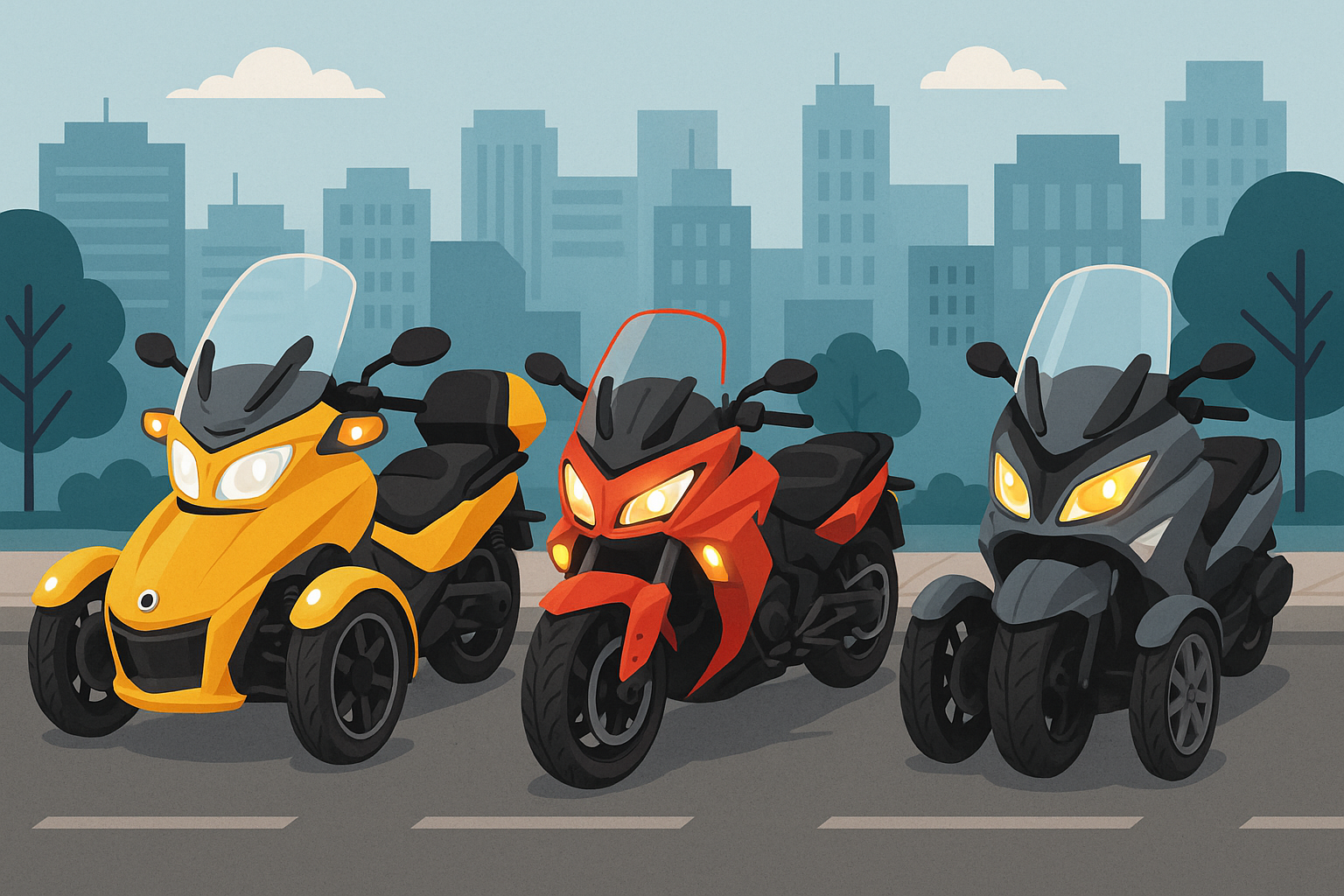
Motor trikes are safer than motorcycles for several key reasons: they're bigger and easier to spot, their unusual appearance catches drivers' attention more effectively, their wider frame and center brake light reduce rear-end collision risks, and their three wheels provide inherently greater stability. The Michigan Auto Law analysis confirms that approximately 77% of traditional motorcycle accidents occur from frontal positions due to visibility issues - a problem that three-wheelers address directly.
But here's the thing - safety isn't the only reason people are switching. Three-wheelers solve practical problems that keep many people away from motorcycling. Physical limitations, balance concerns, and confidence issues become way less significant when you've got that extra wheel providing stability. You're not dealing with the constant balancing act required by traditional motorcycles, especially at low speeds or when stopped at traffic lights.
The riding experience itself is completely different from traditional motorcycles. Instead of leaning through corners, you steer through them more like a car. This fundamental change makes trikes accessible to people who might never consider a traditional motorcycle, while still delivering the open-air freedom that draws people to motorcycling in the first place.
Ever wonder why trike sales keep climbing year after year? The answer goes beyond just safety statistics. These machines are opening up motorcycling to demographics that traditional bikes couldn't reach - older riders dealing with physical changes, people with disabilities, and those who simply want the thrill without the constant balance requirements.
The trike market has really matured over the past decade. We've moved from basic conversion kits to purpose-built machines with sophisticated electronic systems, premium comfort features, and performance capabilities that rival traditional motorcycles. Modern trikes aren't compromise vehicles anymore - they're legitimate alternatives that excel in their own right.
When considering the transition to three-wheel riding, understanding proper motorcycle riding tips becomes even more crucial for safety and enjoyment. Additionally, having the right motorcycle accessories can significantly enhance your three-wheel riding experience.
Your Essential Buying Guide: What Really Matters
Look, I've watched too many people walk into dealerships without doing their homework and walk out with the wrong bike. Before we dive into specific models, let's talk about what actually matters when you're shopping for a three-wheeler.
The biggest mistake I see? People get caught up in horsepower numbers and flashy features without thinking about how they'll actually use the thing. So let's break this down into what really counts.
Configuration: This Changes Everything
Here's the deal - two wheels in front versus two wheels in back isn't just a design choice. It completely changes how your ride handles, and honestly, most people don't realize this until they're already committed.
Two wheels up front (like the Can-Am Spyder) feels more like driving a really fun car. You steer through corners instead of leaning, and it's way more forgiving if you mess up. My friend Janet, who hadn't been on anything with two wheels since college, hopped on a Spyder and was comfortable within minutes.
Two wheels in back (like most Harley trikes) keeps that motorcycle feeling up front but gives you stability where you need it most - when you're stopped or going slow. If you're already a motorcycle rider, this probably feels more natural.
But here's what the brochures don't tell you: neither one is "better." They're just different. And you really need to ride both before deciding.
Configuration |
Pros |
Cons |
Best For |
|---|---|---|---|
2F1R (Two Front, One Rear) |
Way better in corners, easier braking, more like a car |
Feels different from motorcycles, new techniques to learn |
New riders, people coming from cars, stability-focused folks |
1F2R (One Front, Two Rear) |
Keeps motorcycle feel, familiar handling, experienced riders love it |
Trickier in tight corners, less stable than 2F1R |
Experienced motorcyclists, traditional riding feel preference |
Licensing: Don't Assume Anything
This is where people get burned. I can't tell you how many riders I know who bought a trike thinking their car license would cover it, only to get pulled over and find out they were wrong.
Some states treat certain three-wheelers like cars. Others treat them all like motorcycles. And some have rules that make absolutely no sense - like requiring a motorcycle license for a Harley trike but not for a Spyder.
Do yourself a favor: call your DMV before you even start shopping. Ask specifically about the models you're considering. Get it in writing if you can, because even DMV employees sometimes give wrong information.
Consider Sarah, a 55-year-old professional who wanted to try motorcycling but felt intimidated by traditional two-wheelers. She researched three-wheel options and discovered that in her state (Florida), she could legally ride a Can-Am Spyder with her standard driver's license. This eliminated the need for motorcycle safety courses and testing, making her entry into motorcycling much simpler. However, when she moved to Texas two years later, she discovered that state required a motorcycle endorsement for the same vehicle, forcing her to complete the licensing process she'd initially avoided.
Power: More Isn't Always Better
I see a lot of new riders gravitating toward the biggest engine they can afford, thinking more power equals more fun. That's not always true, especially with three-wheelers.
A 600cc Ryker is plenty of bike for most people's daily riding. Sure, it's not going to win any drag races, but it'll get you to work, handle weekend rides, and won't intimidate you while you're learning.
On the flip side, if you're planning cross-country trips with a passenger and luggage, that 600 is going to feel pretty tired on long highway stretches. Know how you'll actually ride before you decide on engine size.
Automatic transmissions dominate the three-wheeler market, making them accessible to riders uncomfortable with clutch operation. However, some models offer manual options or semi-automatic systems with paddle shifters for those wanting more control over power delivery. The Slingshot stands out here with its available 5-speed manual transmission that adds engagement for driving enthusiasts.
Comfort: Your Back Will Thank You Later
This might sound obvious, but comfort matters way more on a three-wheeler than a regular motorcycle. Why? Because you'll probably ride it more. When you're not worried about balancing at every red light, you tend to use your bike for more trips.
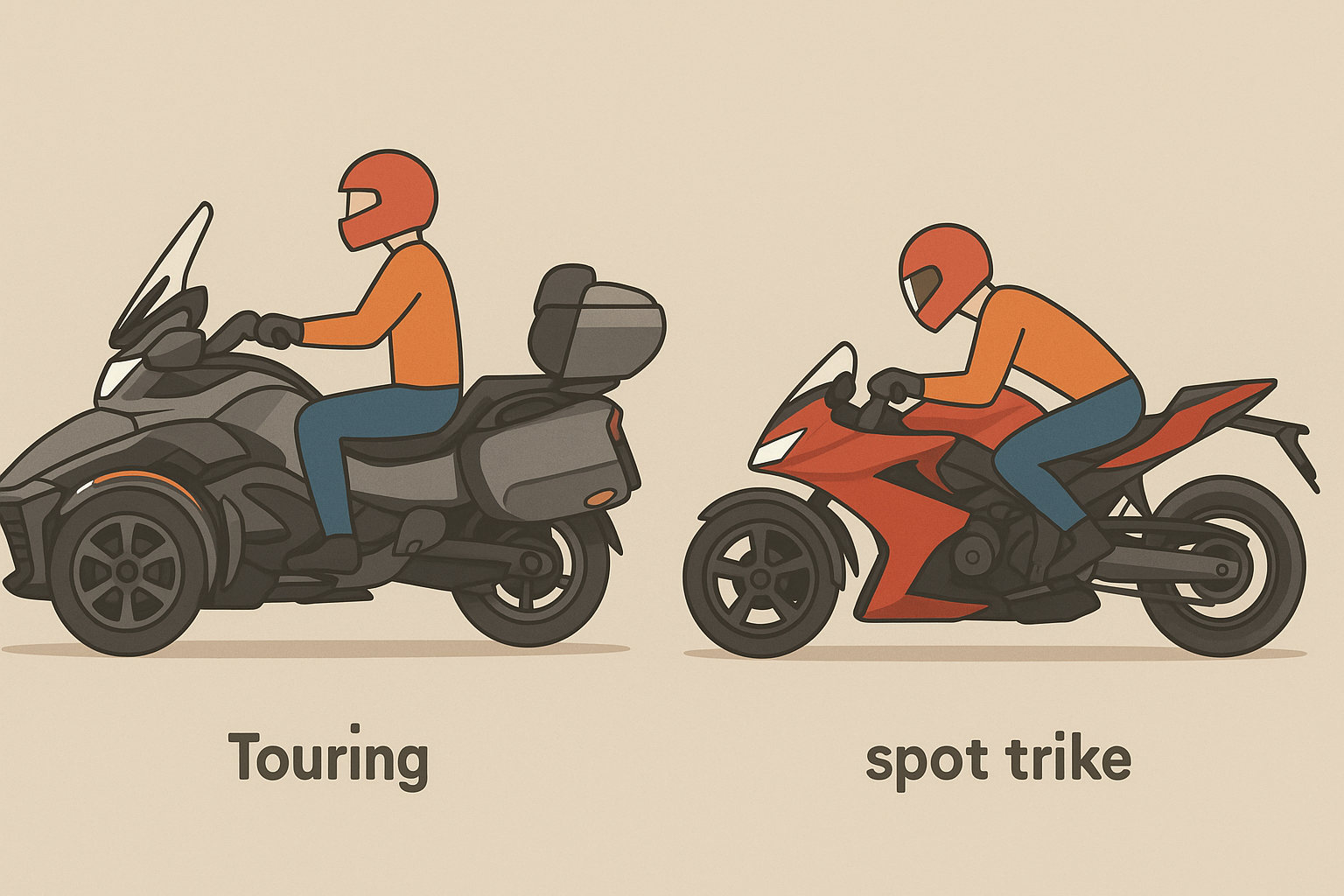
Touring models with that big fairing and comfy seat look boring compared to the sporty ones, but man, they're nice on a long ride. I've done 500-mile days on a Can-Am RT and felt fine. Try that on a sport model and you'll be walking funny for a week.
Passenger considerations matter if you plan two-up riding. Premium touring models offer heated seats, adjustable backrests, and armrests for passenger comfort. Sport models often treat passengers as afterthoughts with minimal comfort features. The Slingshot takes a different approach entirely with its side-by-side seating that makes conversation possible during rides.
Storage becomes crucial for touring or daily commuting. Trikes generally offer more storage options than traditional motorcycles due to their increased stability and mounting points. Consider your local climate and intended use when evaluating wind protection levels. The Slingshot represents a unique category with its automotive-style controls and open cockpit design - exhilarating on perfect days, challenging when conditions turn nasty.
Sport and Performance Trikes: Built for Thrills
Now we're talking about the fun stuff. If you think three wheels mean giving up performance, these machines will change your mind real quick.
1. Can-Am Spyder F3-S
This thing is a rocket ship with training wheels. The 115 horsepower from that 1330cc Rotax ACE engine will surprise you - it pulls hard from any speed and sounds fantastic doing it. The paddle shifters are a nice touch too, giving you some control over the semi-automatic transmission.
The sport-tuned suspension features premium Fox Racing shocks that handle aggressive cornering with confidence. Those Brembo brakes provide exceptional stopping power enhanced by cornering-sensitive ABS that maintains control even during hard braking in turns.
But let's be honest - this isn't a touring bike. The aggressive riding position with clip-on handlebars puts you in control but sacrifices long-distance comfort. Your passenger (if you have one) won't be happy on long rides either.
At $22,000, you're paying sport bike prices for sport bike performance. Just remember that sport bike comfort comes with the package too. The F3-S targets experienced riders who want three-wheel stability without sacrificing sporting character.
2. Polaris Slingshot SL
The Slingshot is weird, and I mean that in the best possible way. It's like someone took a sports car, removed the roof and one wheel, and said "let's see what happens."
That 2.0L ProStar turbocharged engine has serious punch, especially with the manual transmission. The automatic is fine, but if you want the full Slingshot experience, row your own gears. The electronic power steering and stability management systems provide confidence-inspiring control.
The open cockpit means you're getting the full sensory experience - wind, noise, smells, bugs, all of it. Here's the thing about Slingshots though - they're attention magnets. Everywhere you stop, people want to talk about it. If you like that kind of interaction, great. If you just want to ride in peace, maybe look elsewhere.
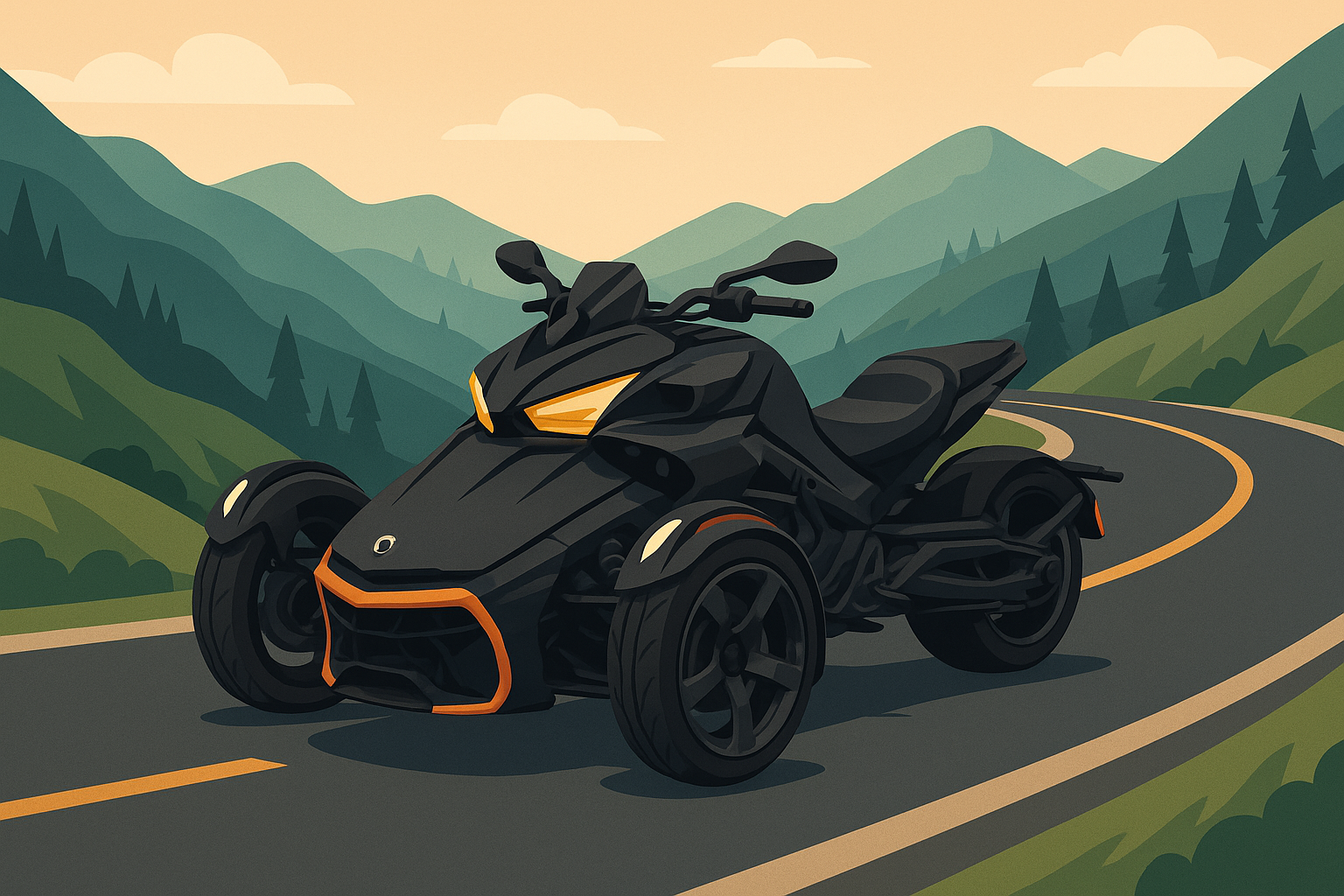
At $31,000, it's not cheap, but you're buying something genuinely unique. The Slingshot attracts attention wherever you go, which can be either a feature or a bug depending on your personality. Just don't expect to stay dry when it rains.
3. Can-Am Spyder F3 Limited
Think of this as the F3-S's more mature sibling. Same 1330cc Rotax ACE engine, same performance, but with enough comfort features to make longer rides bearable. The cruise control alone makes highway riding way more relaxed.
The premium sound system with smartphone connectivity is actually pretty good - better than most motorcycle audio systems. And if you're planning to carry a passenger regularly, they'll appreciate the adjustable backrest and armrests.
It's $6,000 more than the F3-S at around $28,000, but you get a lot for that money. This is the one I'd pick if I wanted sport performance but also planned to use it for real transportation. The F3 Limited works well for riders who want sport performance capability but also plan longer touring rides with passengers.
4. Polaris Slingshot R
This is the Slingshot for people who think the regular one isn't extreme enough. The track-focused Bilstein racing shocks and performance tires provide maximum grip and control, while lightweight forged aluminum wheels reduce unsprung weight for better handling response.
The enhanced aerodynamics package improves high-speed stability and adds aggressive visual appeal. However, the track-focused setup sacrifices ride comfort for performance - this isn't a machine for casual touring or daily commuting.
Unless you're actually planning track days or really aggressive canyon riding, the extra money probably isn't worth it. The regular Slingshot is already plenty exciting for most people.
At $35,000, you're in serious sports car territory. Make sure you're buying performance you'll actually use. The Slingshot R proves that three-wheel vehicles can deliver genuine sports car performance.
For riders seeking the ultimate performance experience, having a reliable motorcycle phone mount becomes essential for navigation and communication during spirited rides.
Touring and Comfort Champions: Long-Distance Luxury
These are the bikes for people who want to actually go places, not just ride around the block. Comfort is king here, and these manufacturers have figured out how to make three-wheelers that eat up miles without beating up riders.
5. Can-Am Spyder RT Limited
This is the gold standard for three-wheel touring. The full fairing keeps weather off you, the seats are genuinely comfortable for all-day riding, and the storage space actually holds useful amounts of stuff.
The premium audio system includes GPS navigation that works well (better than some car systems I've used), and it's loud enough to hear at highway speeds. The heated and ventilated seats work for both rider and passenger, extending your riding season significantly - I've ridden mine comfortably in 40-degree weather.
At $32,000, it's expensive, but it's also a legitimate car replacement for many people. My neighbor sold his sedan after buying one of these because he realized he was using the RT for almost all his transportation. The RT Limited targets serious touring enthusiasts who refuse to compromise on comfort.
6. Harley-Davidson CVO Tri Glide Ultra
If you want the ultimate American touring machine, this is it. The 117ci Milwaukee-Eight engine has that distinctive Harley rumble and enough torque to pull a house. The high-output Rockford Fosgate audio system delivers concert-quality sound that cuts through wind noise.
Custom paint schemes and premium finishes distinguish CVO models from standard Tri Glides, while extensive chrome appointments satisfy traditional Harley styling expectations. The luxury appointments extend to every detail, from premium leather to custom badging.

But you're paying for all that Harley heritage. At $50,000, this costs more than many new cars. The performance is good, but you're really buying the brand and the experience. That said, if you've always wanted a Harley and need three-wheel stability, this delivers the full experience. Just be prepared to explain the price to your spouse.
7. Can-Am Spyder RT
The "regular" RT gives you most of the Limited's touring ability at a more reasonable price. You still get the adjustable windshield and comfortable seating that make highway miles pleasant, plus integrated storage for touring gear. Electronic cruise control comes standard, reducing fatigue during long highway stretches.
You lose some luxury features, but you keep the important stuff - comfort, weather protection, and storage. At $26,000, it's still not cheap, but it's a lot more reasonable than the Limited. For most people, this has everything they actually need for serious touring.
8. Indian Roadmaster Elite Trike
Indian builds gorgeous motorcycles, and this trike conversion maintains that beauty while adding stability. The heated and cooled seats include massage functions that make even the longest rides comfortable for both rider and passenger - they sound gimmicky, but they're actually pretty nice on long rides.
Premium audio with smartphone integration keeps you connected and entertained, while extensive weather protection shields you from the elements. The Thunder Stroke 111 engine provides smooth, torquey power delivery perfect for loaded touring.
At $45,000, you're paying premium prices for premium features. Make sure you'll use all that luxury before spending the money. You're buying into traditional American motorcycle heritage combined with modern luxury and three-wheel stability.
9. Harley-Davidson Tri Glide Ultra
The "regular" Tri Glide gives you authentic Harley touring without the CVO price tag. It's still expensive at $37,000, but you get that classic Harley experience with modern conveniences. The 114ci Milwaukee-Eight engine provides characteristic Harley torque and sound, while the Boom! Box infotainment system handles navigation and entertainment duties.
The King Tour-Pak provides extensive storage capacity with integrated passenger backrest, while the security system and keyless ignition add modern convenience to traditional Harley touring capability. It targets riders who want traditional American motorcycle heritage without compromising touring comfort.
Meet Tom, a retired engineer who always dreamed of cross-country motorcycle touring but was concerned about balance issues after a minor stroke. He invested in a Harley Tri Glide Ultra and completed a 6,000-mile journey from California to Maine. The trike's stability gave him confidence on mountain passes, while the extensive storage held everything needed for three weeks on the road. The familiar Harley sound and feel satisfied his lifelong motorcycle dreams without compromising safety or comfort.
For long-distance touring adventures, understanding proper long-distance motorcycle riding techniques becomes essential for comfort and safety.
Budget-Friendly Options: Your Gateway to Three-Wheeling
Not everyone needs to spend $30,000 to have fun on three wheels. These bikes prove you can get into the game without taking out a second mortgage.
10. Can-Am Ryker 600
This little guy is the gateway drug to three-wheeling. At $8,500, it won't break the bank like some bikes that cost more than a new car, and the 600cc Rotax engine is plenty for most people's daily riding. It's light, nimble, and honestly just plain fun to ride.
The customization options are endless - Can-Am clearly wants you to make it your own. Essential electronic stability and traction control systems provide safety benefits despite the entry-level pricing. And since it's built on a proven platform, reliability shouldn't be a concern.
My only complaint? It feels a little buzzy at highway speeds. It'll do 75 mph all day, but it's not as smooth as the bigger engines. For around-town riding and weekend fun, though, it's hard to beat. This 3 wheel motorcycle for adults proves that affordability doesn't mean compromising on fun.
11. Can-Am Ryker 900
The 900 fixes the 600's highway issues with more power and smoother operation. The 900cc Rotax ACE engine provides confident highway performance and better two-up capability. It's still affordable at $11,000, but it feels like a more complete motorcycle.
Sport and Rally editions offer different styling and feature packages to match various preferences. The modular design philosophy makes customization easy and affordable, letting you modify your Ryker as your needs and budget evolve.
This is probably the sweet spot for most riders - enough power for any situation, still reasonably priced, and built to last. It handles urban commuting, weekend recreation, and light touring duties with equal competence.
12. Yamaha Niken
The Niken is weird - it leans like a motorcycle but has three wheels. It takes some getting used to, but once you figure it out, it's actually pretty cool. Yamaha's leaning multi-wheel (LMW) technology lets the front wheels lean through corners while maintaining motorcycle-style handling.
The 847cc CP3 engine provides excellent sport performance, and the advanced LMW technology provides additional front-end grip and stability without sacrificing the motorcycle riding experience. You still lean through corners and experience traditional motorcycle dynamics with enhanced confidence.
At $17,000, it's not exactly cheap, but it offers something genuinely different. Plus, it's a Yamaha, so reliability should be excellent. It occupies unique territory as a motorcycle that happens to have three wheels rather than a three-wheeler that replaces motorcycle experience.
13. Motor Trike Gladiator
If you already have a motorcycle you love but need three-wheel stability, conversion might be your answer. The Gladiator conversion system lets you transform various motorcycle models into trikes while maintaining their original character and performance.
Professional installation ensures proper integration with your donor motorcycle's systems and maintains reliability. The independent rear suspension system improves stability without dramatically altering handling characteristics.
Installation costs vary, but figure $15,000-25,000 total depending on your bike and how fancy you want to get. It's not cheap, but it lets you keep riding a bike you're emotionally attached to. Just make sure you use a reputable installer - a bad conversion job can ruin a good motorcycle.
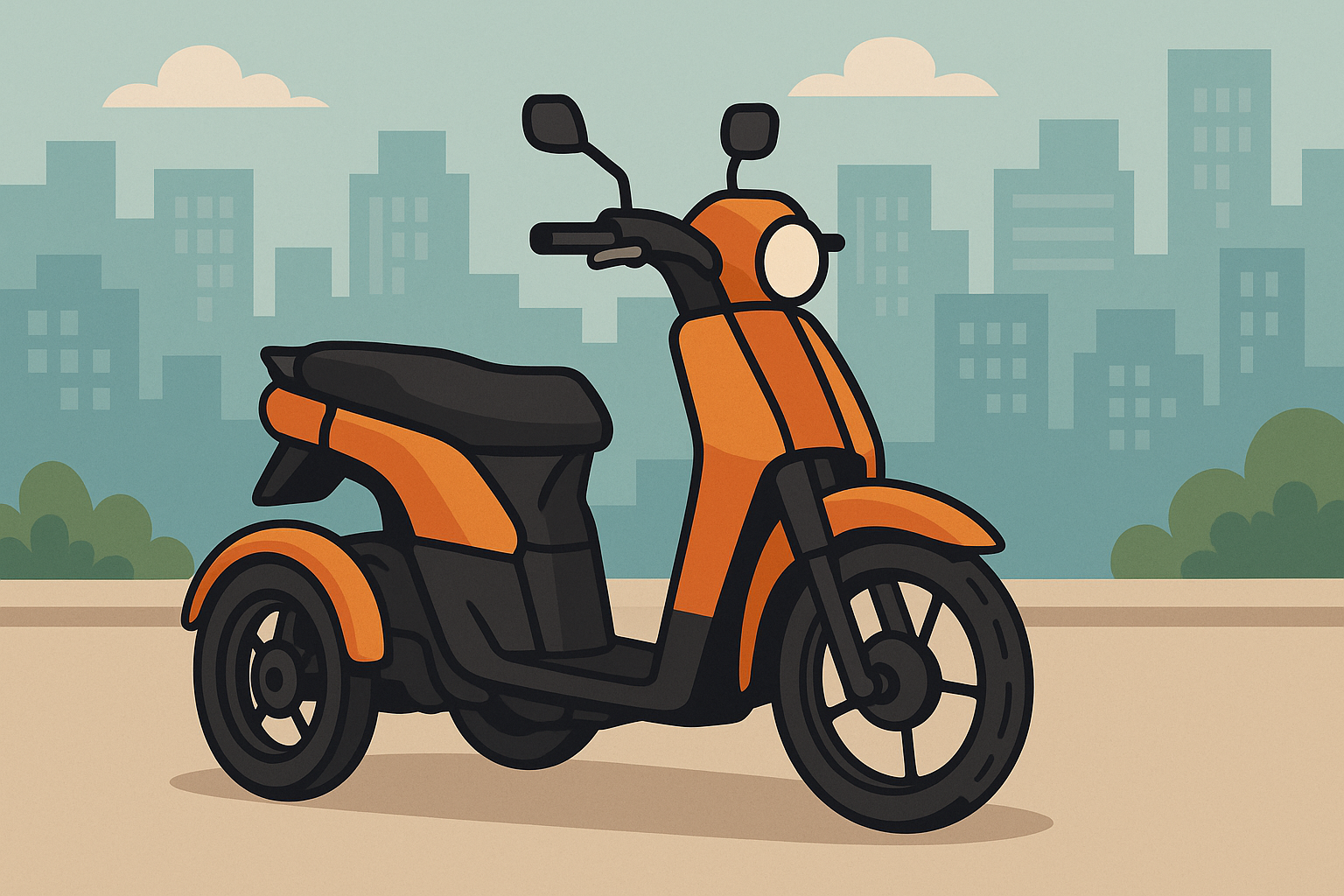
Model |
Engine |
Price Range |
Best For |
Key Features |
|---|---|---|---|---|
Can-Am Ryker 600 |
600cc Rotax |
$8,500 |
New riders, urban commuting |
Lightweight, customizable, essential safety systems |
Can-Am Ryker 900 |
900cc Rotax ACE |
$11,000 |
Versatile riding, highway capable |
Better power, Sport/Rally editions, modular design |
Yamaha Niken |
847cc CP3 |
$17,000 |
Motorcycle enthusiasts |
Leaning multi-wheel, maintains motorcycle feel |
Motor Trike Gladiator |
Varies (conversion) |
$15,000-25,000 |
Existing motorcycle owners |
Independent suspension, professional installation |
Budget trikes don't mean budget performance. The Ryker series proves that affordable three-wheelers can deliver genuine thrills and practical transportation.
Utility and Work-Focused Models: Function Over Form
Sometimes you need a three-wheeler that works for a living. These bikes prioritize capability over comfort or style.
14. Ural Gear-Up
The Ural is basically a tractor with handlebars. It's not refined, it's not particularly fast, and it definitely doesn't coddle you. But it'll go places other bikes can't and carry stuff they can't carry.
The 750cc boxer twin engine provides adequate power for on and off-road adventures, while the rugged construction handles challenging conditions. The two-wheel drive system actually works - I've seen these things climb hills that would stop most cars. And the sidecar is genuinely useful for cargo or a passenger (though comfort is relative).
At $18,000, it's not cheap for what you get in terms of refinement. But if you need genuine utility and don't care about luxury, it's hard to beat. It offers unique capabilities and character that appeal to adventure riders and those needing utilitarian transportation.
15. Can-Am Ryker Rally Edition
The Rally takes the basic Ryker platform and adds just enough adventure capability to make it interesting. Higher ground clearance and protective skid plates, along with all-terrain tires and enhanced suspension, handle rough roads better than standard Ryker models.
Adventure-focused styling includes protective elements and rugged appearance cues that suggest off-road capability. The enhanced suspension provides better comfort on rough surfaces while maintaining on-road manners.
It's not a serious off-road machine, but it'll handle fire roads and light trails just fine. At $12,500, the Rally Edition adds adventure capability without major price increases. It's perfect for riders who want three-wheel stability with light off-road capability for exploring unpaved roads.
16. Polaris Slingshot SLR
The Slingshot SLR enhances the standard platform with increased suspension travel and protective underbody panels for light off-road capability. Adventure-ready accessories expand its capability for exploring beyond paved roads.
Enhanced suspension provides better comfort on rough surfaces while maintaining the Slingshot's distinctive character and performance. The protective elements guard against damage during off-road excursions.
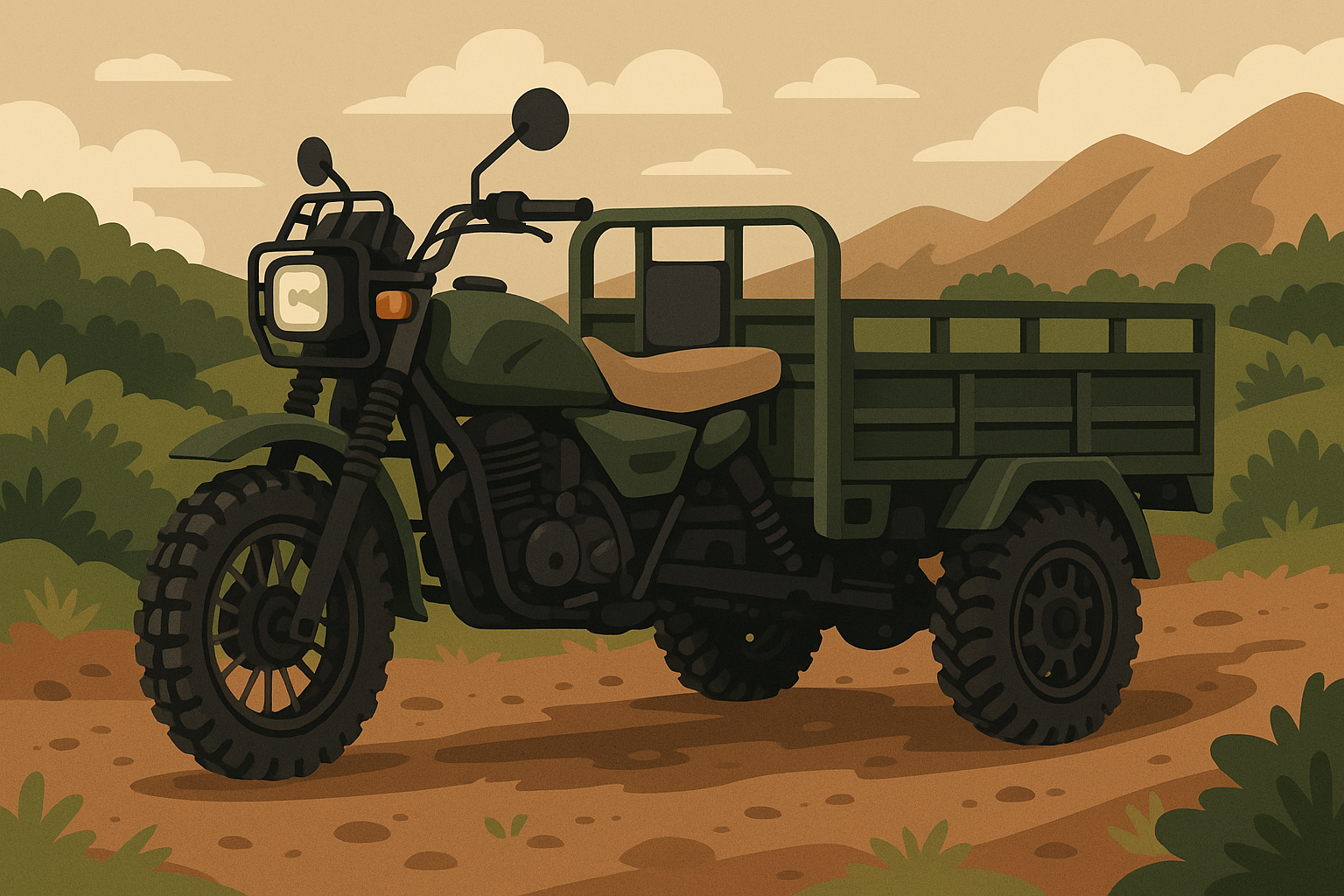
Around $28,000 puts the SLR in mid-range Slingshot territory while adding adventure capability. It appeals to riders who want Slingshot uniqueness with expanded capability for varied terrain.
Electric and Alternative Fuel: The Future is Here
Electric three-wheelers are finally getting good enough to be practical transportation, not just expensive toys.
17. Arcimoto FUV Evergreen
The FUV looks like something from a sci-fi movie, but it's actually pretty practical. Over 100 miles of range on a single charge covers most people's daily needs, and the instant torque is addictive. The tandem seating configuration maximizes efficiency while providing weather protection.
Electric drivetrain provides instant torque delivery and silent operation, making it ideal for urban commuting. The minimal environmental impact appeals to environmentally conscious riders seeking sustainable transportation alternatives.
The tandem seating takes some getting used to, but it makes the vehicle narrow enough to lane-split (where legal). Operating costs are minimal - my friend with one spends about $30 a month on electricity. At $20,000, it's not cheap upfront, but the operating savings add up quickly if you ride regularly.
18. Vanderhall Edison²
Vanderhall makes beautiful three-wheelers, and the Edison² brings that style to electric power. Premium interior materials and smartphone integration provide upscale experience that rivals luxury cars. The advanced electric drivetrain delivers impressive performance while maintaining the distinctive Vanderhall character.
Battery management systems optimize range and performance while protecting long-term battery health. The advanced battery management should help long-term reliability, though we won't know for sure for a few more years.
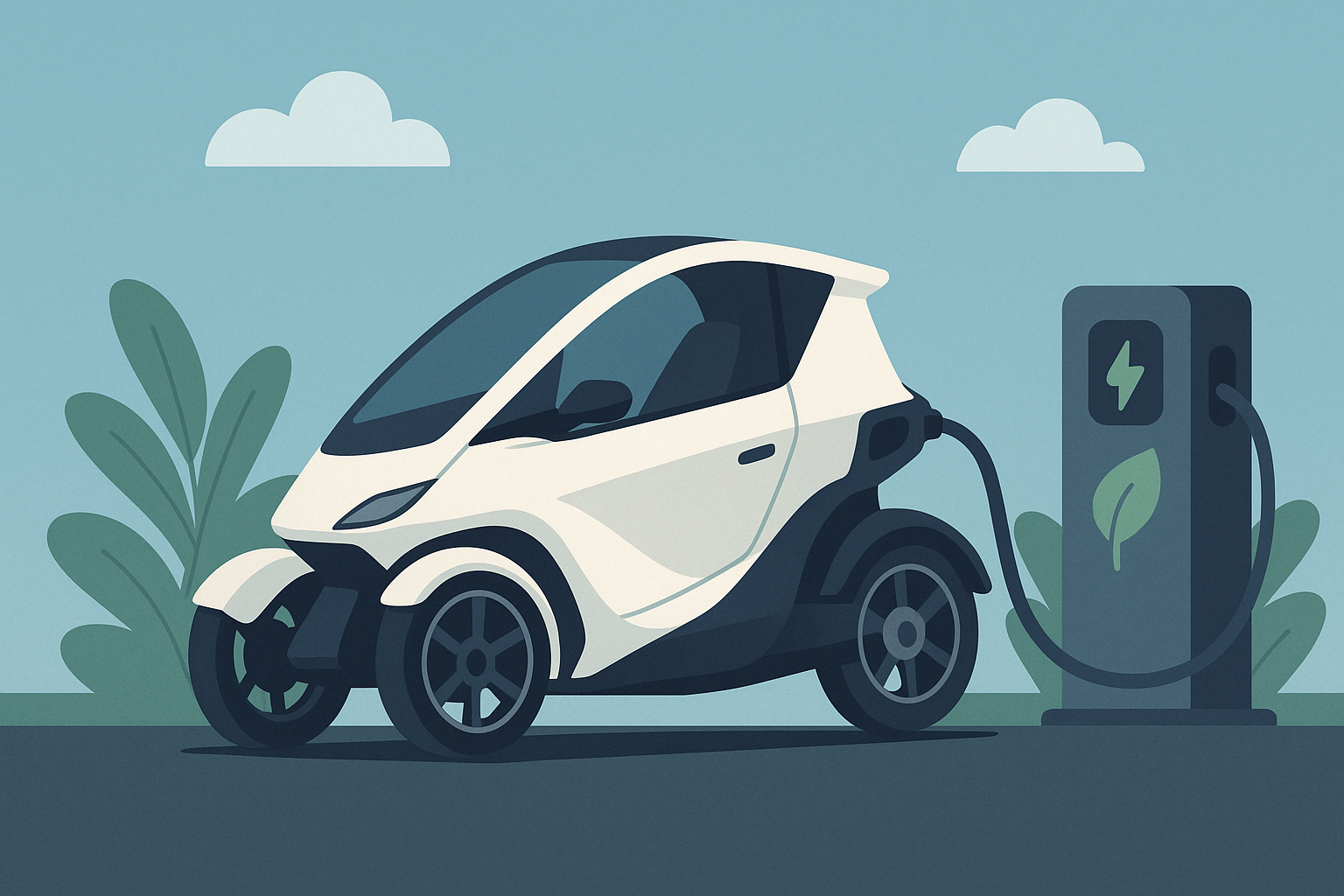
At $35,000, the luxury appointments justify the price if you want something special. But if you want to go electric in style, this is how you do it. It targets early adopters willing to pay premium prices for advanced electric capability.
Consider Maria, an environmental consultant who needed reliable transportation for client visits within a 50-mile radius. She chose the Arcimoto FUV Evergreen for its electric efficiency and weather protection. Her daily commute costs dropped to under $2 in electricity versus $15 in gas for her previous car. The unique appearance generates conversations with clients about sustainable transportation, actually helping her business while reducing her carbon footprint. After two years, she's saved over $3,000 in fuel costs alone.
Custom and Specialty Rides: Unique Engineering
These are the three-wheelers for people who want something nobody else has.
19. Morgan 3-Wheeler
The Morgan is pure automotive art. Hand-built in England with vintage-inspired design powered by modern 2.0L Ford EcoBoost engine, it's unlike anything else on the road. Lightweight construction and distinctive character create an ownership experience unlike any other three-wheeler.
Limited production numbers ensure exclusivity, while the vintage-inspired design appeals to collectors and enthusiasts who appreciate traditional craftsmanship. The EcoBoost engine provides surprising performance despite the classic looks.
At $60,000, you're paying for exclusivity and craftsmanship. You're buying into automotive history and distinctive character that's impossible to replicate with mass-produced vehicles. The Morgan commands premium pricing for its exclusivity and craftsmanship.
20. Campagna T-REX 16S
The T-REX is a track weapon that happens to be street legal. Carbon fiber construction, sequential transmission, and exotic car performance in three-wheel form. Campagna's T-REX 16S pushes three-wheel performance to exotic sports car levels with its 1.6L inline-4 engine and sequential manual transmission.
Track-focused design prioritizes performance over comfort, making it suitable for serious performance driving and track events. The exotic construction and limited production create exclusivity that appeals to performance enthusiasts.
At $65,000, it's supercar money for supercar performance. Unless you're actually tracking it regularly, you're probably buying more capability than you'll ever use. But sometimes that's the point. It targets serious performance enthusiasts who want three-wheel stability with maximum capability.
21. Rewaco RF1 GT
Rewaco's RF1 GT demonstrates German engineering excellence with multiple engine configurations and both touring and sport variants available. Premium materials and finishes reflect European attention to quality and detail.
German engineering provides reliability and performance that meets European standards, while the multiple configuration options let buyers customize their experience. The build quality rivals premium European automobiles.
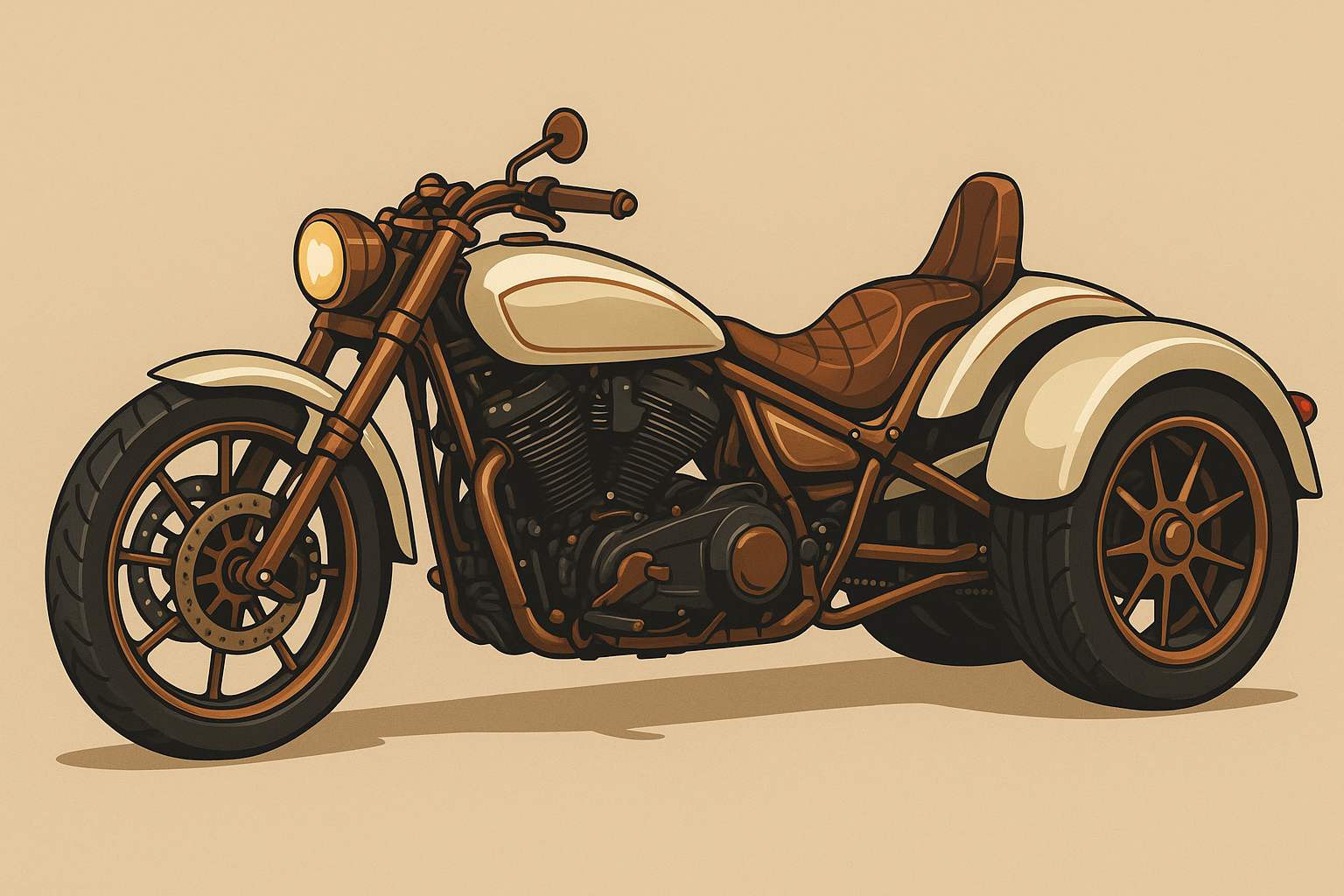
Pricing from $40,000-60,000 reflects the German engineering and premium materials. You're buying European quality and engineering excellence that's rare in the three-wheel market.
22. Boom Trikes Mustang
Boom Trikes' Mustang conversion transforms Harley-Davidson motorcycles into trikes while maintaining their distinctive character. Independent rear suspension improves comfort and handling without sacrificing the Harley experience.
Extensive customization options let owners personalize their conversions to match individual preferences. Professional conversion work ensures reliability and maintains the original motorcycle's performance characteristics.
Pricing ranges from $35,000-50,000 depending on the donor Harley and customization level. You're preserving Harley heritage while gaining three-wheel stability and enhanced comfort for touring.
23. California Scooter Co. Zuma Trike
California Scooter Co.'s Zuma Trike conversions provide professional installation with warranty coverage for multiple motorcycle platforms. Various suspension configurations accommodate different riding preferences and original motorcycle characteristics.
Professional installation ensures proper integration with original motorcycle systems while maintaining performance characteristics. The conversion approach appeals to riders who want to keep their current bike while adding three-wheel capability.
Pricing from $20,000-30,000 includes professional installation and warranty coverage. The conversion specialist approach provides confidence in quality and reliability while preserving the original motorcycle's character.
24. Lehman Trikes Renegade
Lehman Trikes' Renegade conversion specializes in Honda Gold Wing platforms, combining Honda's legendary reliability with independent rear suspension for enhanced touring comfort. The established conversion specialist brings decades of experience to Gold Wing conversions.
Honda Gold Wing reliability translates perfectly to trike format, providing dependable long-distance touring capability. The conversion maintains Gold Wing comfort and features while adding three-wheel stability for riders who need it.
Pricing ranges from $25,000-35,000 depending on the Gold Wing model and conversion specifications. You're combining Honda's proven touring capability with professional trike conversion expertise.
25. Freedom Trikes
Freedom Trikes provides conversion options for multiple motorcycle platforms with bolt-on conversion kits that maintain original motorcycle characteristics. DIY-friendly installation options reduce costs for mechanically inclined owners.
The conversion approach preserves original motorcycle performance and feel while adding rear wheel stability. Multiple platform compatibility means you can convert various motorcycle models to three-wheel configuration.
Pricing from $18,000-28,000 includes conversion components with DIY installation options available. The approach appeals to budget-conscious riders who want three-wheel capability without premium pricing.
How Each Model Stacks Up Against Your Priorities
Now here's where the rubber meets the road - literally. Understanding how each of these 25 three-wheel motorcycles performs against the key considerations I outlined earlier helps you match specific models to your individual needs, preferences, and riding requirements.
Configuration Performance Analysis
The ones with two wheels up front (Can-Am Spyder series, Polaris Slingshot, Yamaha Niken) handle corners way better and feel more like driving a really fun car. Those two front wheels make braking way more confident and provide stability that's especially reassuring for new riders or folks coming from cars.
But here's the trade-off - they feel completely different from traditional motorcycles. You steer through corners rather than leaning, which some experienced motorcyclists find less engaging than traditional motorcycle dynamics.
Models with two wheels in back (Harley trikes, Indian conversions, most conversion kits) keep that familiar motorcycle feel up front while adding rear stability. Experienced motorcyclists often prefer this setup because the steering and front-end dynamics stay the same as their motorcycle experience.
The downside? They're trickier in corners compared to the two-front-wheel designs. They're better suited for riders with motorcycle experience who want added stability without completely changing the riding experience.
Licensing Requirements Breakdown
Can-Am Spyder and Ryker models typically work with just a regular driver's license in most states, making them accessible to riders without motorcycle endorsements. But requirements are all over the map, so you absolutely need to check with your local DMV.
Polaris Slingshot classification varies by state - some treat it as a motorcycle requiring endorsements, while others accept standard licenses. The open cockpit design and car-like controls influence how different states classify it.
Traditional motorcycle conversions (Harley trikes, Indian trikes, conversion kits) usually need motorcycle endorsements because they're still classified as motorcycles despite having three wheels. The motorcycle-based nature typically maintains motorcycle licensing requirements.
The Yamaha Niken needs a motorcycle endorsement in most areas because it's classified as a motorcycle that happens to have three wheels rather than a three-wheel vehicle.
Power and Performance Evaluation
Smaller engines (600-900cc) like those in Can-Am Ryker models work great for city riding and light highway use. They're perfect for new riders or folks primarily riding in town where maximum power isn't necessary.
Mid-range engines (900-1330cc) found in Can-Am Spyder F3 series and Yamaha Niken handle most riding scenarios well without overwhelming new riders. These engines provide good highway performance and two-up capability.
Big displacement engines (1400cc+) in premium touring models like Harley CVO Tri Glide and Indian Roadmaster Elite provide tons of torque for loaded touring and highway cruising. They're great at maintaining highway speeds with passengers and cargo but might overwhelm inexperienced riders.
Electric powertrains in Arcimoto FUV and Vanderhall Edison² deliver instant torque and silent operation perfect for city commuting. Range limitations currently restrict them to local riding, but operating costs stay minimal compared to gas engines.
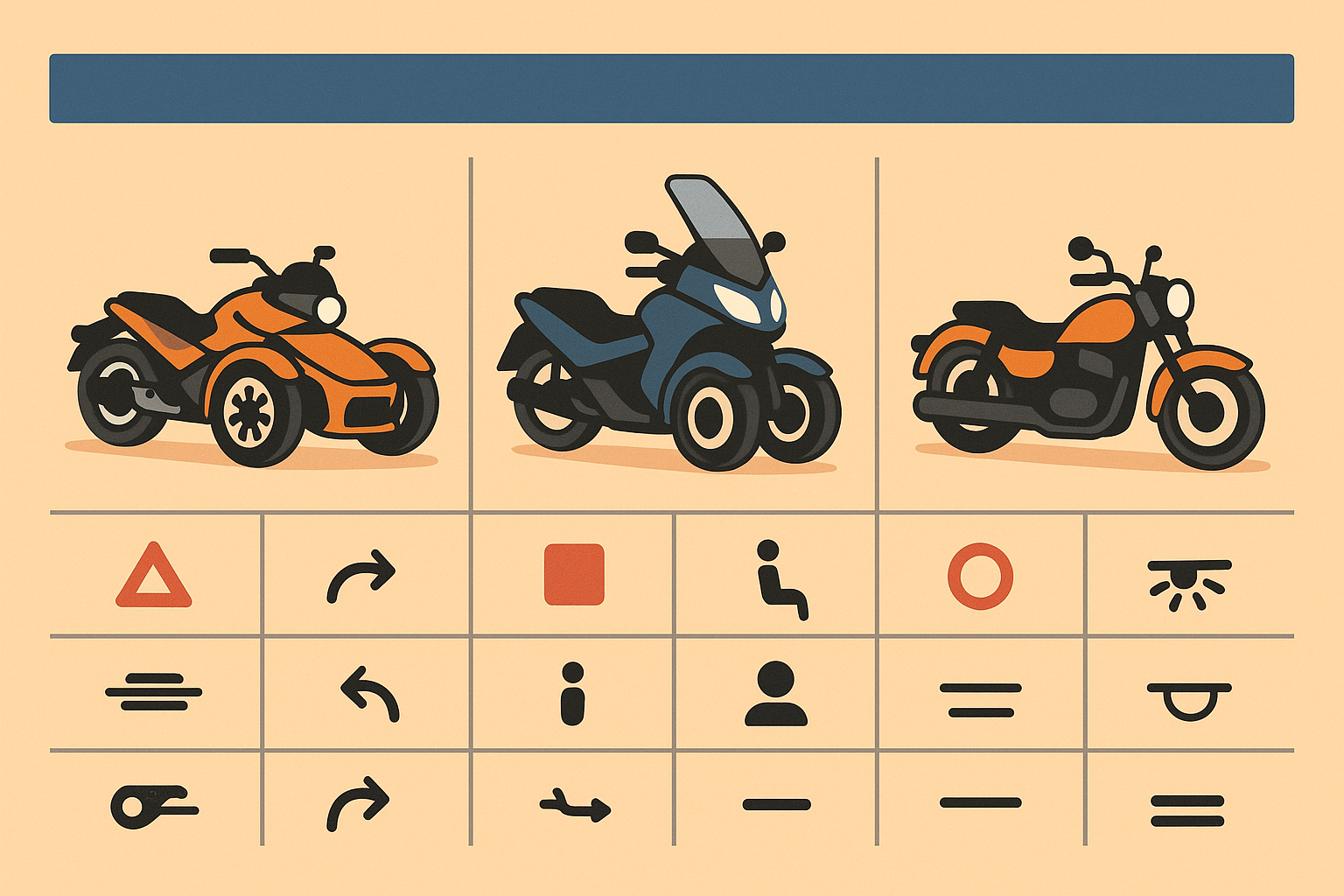
Price Range |
Models |
Engine Size |
Best Use Case |
Licensing Typical |
|---|---|---|---|---|
$8,500-15,000 |
Can-Am Ryker 600/900, Rally Edition |
600-900cc |
Urban commuting, entry-level |
Standard license (most states) |
$15,000-25,000 |
Yamaha Niken, Motor Trike Gladiator, Can-Am RT |
750-1330cc |
Versatile riding, light touring |
Motorcycle endorsement |
$25,000-40,000 |
Can-Am F3 Limited, RT Limited, Polaris Slingshot variants |
900-2000cc |
Sport touring, premium features |
Varies by state |
$40,000-65,000 |
Harley CVO, Indian Elite, Morgan 3-Wheeler, T-REX 16S |
1400cc+ or specialty |
Luxury touring, exotic performance |
Motorcycle endorsement |
The Slingshot sits in a unique spot across multiple price points, offering everything from entry-level models around $20,000 to high-performance variants over $35,000. Its car-like operation and flexible licensing make it appealing to car drivers exploring three-wheel options.
Trike conversions provide another path for existing motorcycle owners who want three-wheel benefits without abandoning their current bikes. Professional conversions maintain original performance while adding stability, though costs can approach new vehicle pricing when you include the donor motorcycle.
Protecting Your Investment with Smart Accessories
When you've dropped serious money on a premium three-wheel motorcycle, protecting your essential gear becomes crucial. Whether you're navigating cross-country routes on a Can-Am Spyder RT, capturing scenic adventures on your Polaris Slingshot, or staying connected during long rides on your Harley Tri Glide, your smartphone serves as an essential riding companion.
Three-wheel motorcycles present unique mounting challenges due to different vibration patterns, weather exposure, and the need for secure attachment during dynamic riding conditions. Regular phone mounts often fail when exposed to constant vibration or weather, potentially damaging expensive devices or creating dangerous distractions.
Rokform's motorcycle mounting systems are specifically engineered for the demanding environment of three-wheel motorcycles. Their RokLock™ twist-lock technology provides four layers of security - twist lock, magnet, safety lanyard, and rugged case protection. This system proves particularly valuable for three-wheeler riders who experience different vibration patterns and mounting challenges compared to traditional motorcycles.
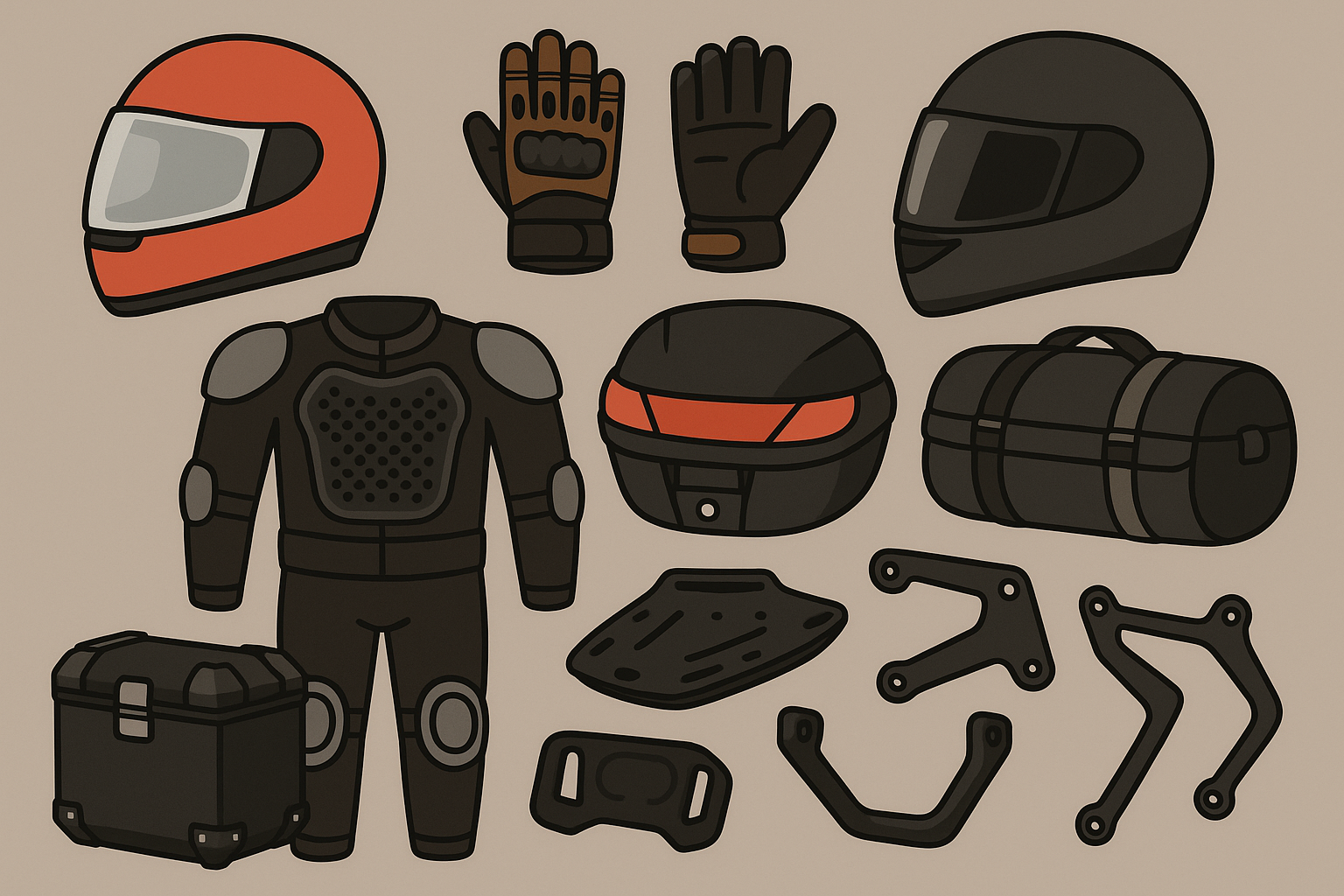
The CNC-machined 6061 T-6 aircraft-grade aluminum construction handles the unique stresses of three-wheel motorcycle riding, while military-grade polycarbonate cases protect against drops that can occur during mounting and dismounting procedures. For touring riders on models like the Can-Am RT or Harley CVO Tri Glide, magnetic mounting capability allows quick phone positioning on any magnetic surface during stops, while weatherproof protection ensures reliable performance in all conditions.
Whether you're documenting cross-country adventures, relying on navigation apps for daily commuting, or need secure device mounting for professional use, Rokform's mounting solutions provide the security and accessibility that three-wheel motorcycle riding demands.
For riders seeking comprehensive protection, exploring options for motorcycle handlebar mounts and motorcycle perch mounts ensures optimal device security during three-wheel adventures.
Final Thoughts
Three-wheel motorcycles have come a long way from being quirky curiosities to legitimate transportation alternatives that solve real problems for real riders. The 25 models I've covered in this guide represent the full spectrum of three-wheel possibilities, from affordable entry-level machines to exotic performance vehicles and everything in between.
Your choice ultimately comes down to matching the right configuration, features, and capabilities to your specific needs and riding goals. New riders might find the Can-Am Ryker 600 provides the perfect introduction to three-wheeling, while experienced touring enthusiasts could gravitate toward the luxury and capability of a Harley CVO Tri Glide Ultra or Can-Am Spyder RT Limited.
The safety benefits of three-wheel motorcycles - better visibility, greater stability, and reduced accident risk - make them compelling alternatives to traditional motorcycles for many riders. Whether you're dealing with physical limitations, confidence concerns, or simply want the added security of that third wheel, today's three-wheelers deliver genuine motorcycling experiences without traditional motorcycle compromises.
Here's my advice: don't rush this decision. Sit on everything before you buy - I've seen too many people fall in love with specs only to hate the actual riding position. Your local dealer matters more than you think, so find one who actually rides what they sell.
Remember that licensing requirements vary dramatically by location and vehicle type, so call your DMV this week and verify your local requirements before making any purchase decisions. Don't assume anything - even DMV employees sometimes give wrong information, so get it in writing if possible.
Similarly, insurance costs and maintenance considerations can vary dramatically between models and manufacturers. Factor these ongoing costs into your decision - that $8,500 Ryker might cost way less to insure and maintain than a $50,000 CVO Tri Glide.
The three-wheel motorcycle market keeps evolving rapidly, with electric options gaining capability and traditional manufacturers expanding their offerings. Whatever your needs, budget, or experience level, there's likely a three-wheel motorcycle that fits your requirements and delivers the riding experience you're seeking.
Bottom line: test ride at least three different configurations before deciding. The difference between two-front-wheel and two-rear-wheel setups is bigger than most people realize, and you won't know which one clicks for you until you actually ride them.

